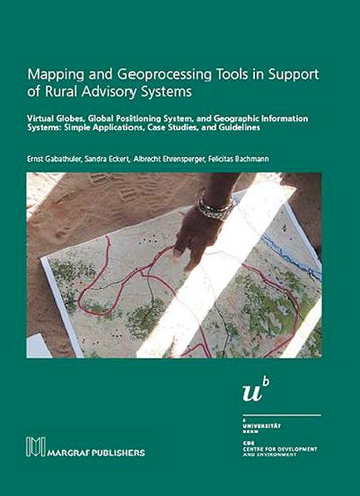Resource information
The main objective of this book is to demonstrate the potential that geoprocessing tools have for supporting rural extension and development. The focus is on the Global Positioning System (GPS), virtual globes, and simple geographic information systems (GIS). Based on examples, and without any claim to comprehensiveness, the book offers a range of insights into the use of these geoprocessing tools in interventions in the context of international development cooperation. The aim is to encourage extensionists and rural advisors who work with communities and have little or no experience with mapping tools to start using them whenever this makes sense and adds value to their initiatives and projects. Rural advisors with stronger technical skills in GIS and mapping will find inspiring examples of projects that have successfully made use of these tools – examples they might want to “translate” to suit their own project objectives and environments.
Background: Part 1 of the book provides background information on the role and the potential of spatial information at various stages of rural extension and development projects, on the tools available for creating, managing, analysing, and visualising spatial information, and on the specific challenges that arise when using GIS and mapping tools in rural development and extension.
Illustration: Part 2 illustrates the use of geoprocessing tools. First, it outlines possible applications of mapping tools in different fields of activity such as stakeholder dialogue, capacity building, and monitoring and evaluation. Second, it compiles 10 case studies from projects implemented by CDE and its partners in Africa, Asia, and Central Asia. The case studies are intended as inspiring examples of how geoprocessing tools can be applied in rural development projects. They also offer methodological and technical information and illustrate the various steps needed to apply the tools in the given project.
Technical guide: Part 3 contains practical instructions for the use of handheld GPS receivers, virtual globes (Google Earth), and geographic information systems (Quantum GIS). The technical guidance provided is of an introductory nature and includes applications such as GPS data collection and downloading, GIS data generation and editing, as well as simple map making and data analysis. Finally, recommendations are given on the selection of adequate technical tools, as well as on how to access, generate, and manage spatial data.
To view the book flyer please see attached pdf

